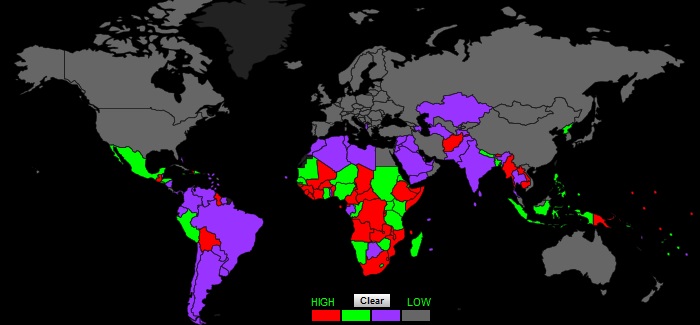
Open trade is a great tool to fight malnutrition: WTO
Sachin Manawaria | @TheDollarBiz
 Source - World Life Expectancy
Source - World Life ExpectancyThe least developed countries (LDCs) are the ones where malnutrition is at the highest, and multilateralism can play a significant role in addressing this problem, David Shark, Deputy Director-General, World Trade Organisation (WTO), said at the Second International Conference on Nutrition in Rome this week. Facts show that improved economic activity and trade in a country aids in the improvement in the per capita income of its citizens. According to the United Nation’s Food and Agriculture Organisation (FAO) estimates, nearly 870 million people of the 7.1 billion people in the world (or one in eight) suffer from chronic undernourishment. Of this, almost 852 million are from developing countries, and represent around 15% of the population of the developing countries. In comparison, developed countries are home to around 16 million undernourished people. Malnutrition problems are graver and span across the world. According to World Life Expectancy, the malnutrition death rate per 100,000 is highest in countries like Haiti (53.3), Angola (36.2), Guatemala (33.2), Guinea-Bissau (32.3), and Mali (30.1), with several land locked countries in the list. On the other side, countries such as Singapore (0.1) and UK (0.3) fare much better. Countries that are more open trade are associated with faster economic growth and less poverty, said David Shark. He emphasised that malnutrition is a complex issue and trade policy is clearly a complement rather than a substitute for a sound nutrition policies. He said, “Better implementation of WTO rules will help world food markets function better, and urged members to make progress on multilateral cooperation on nutrition.”






 to success.
to success.